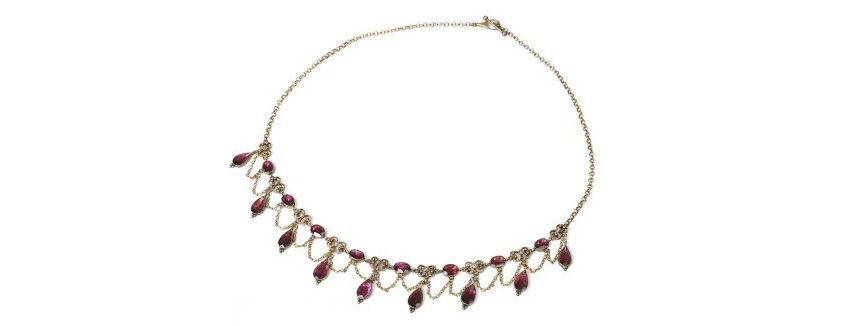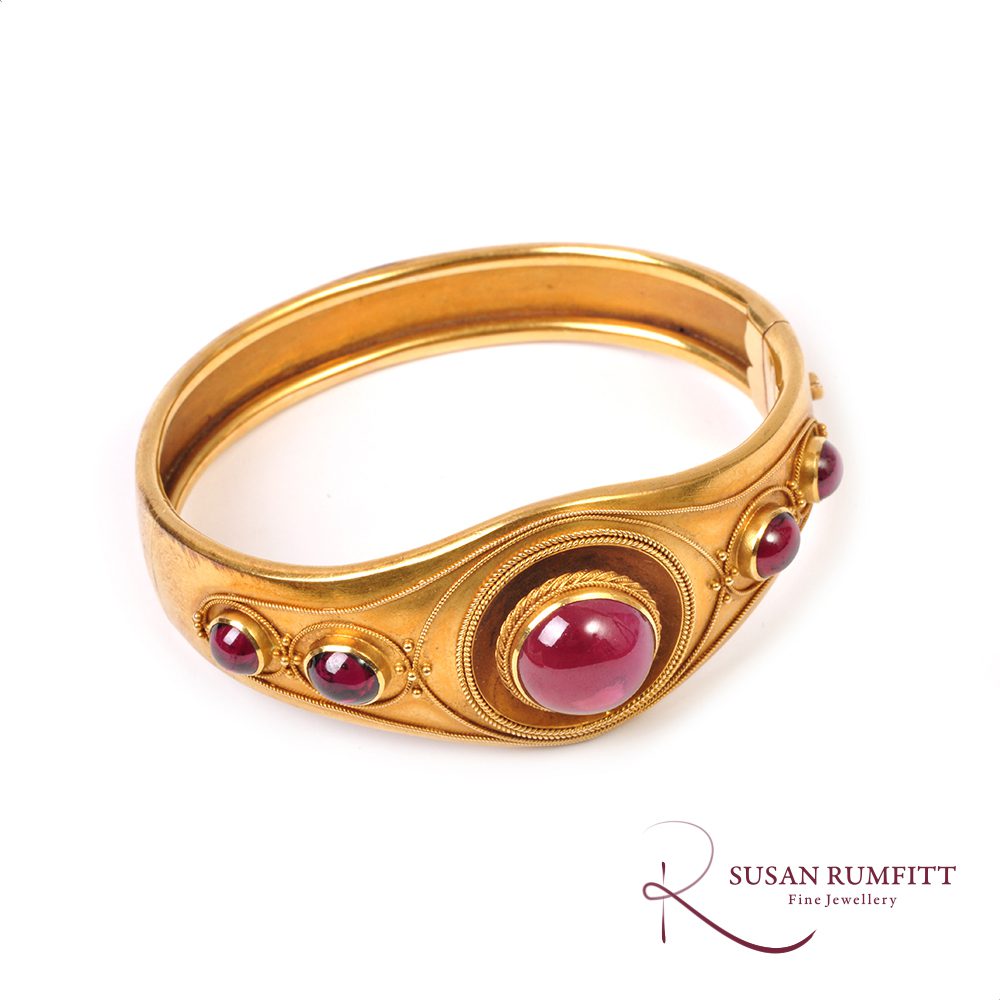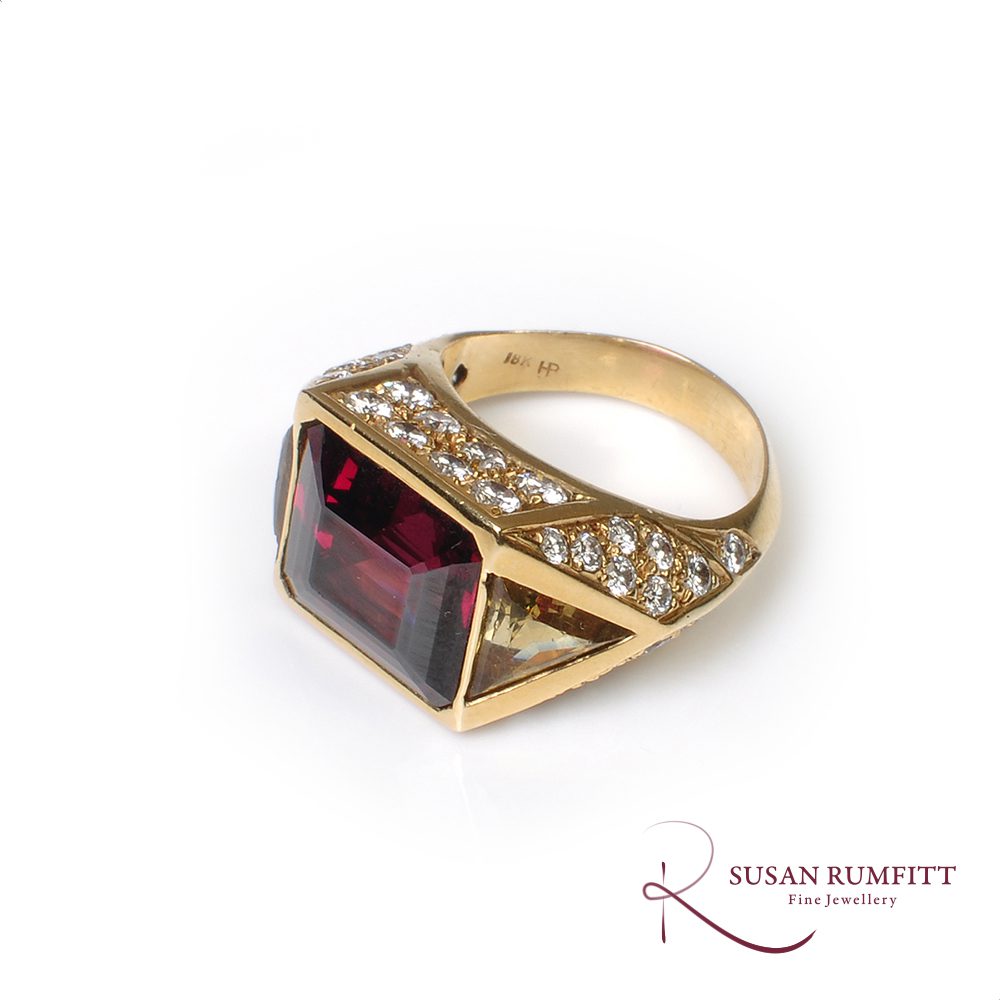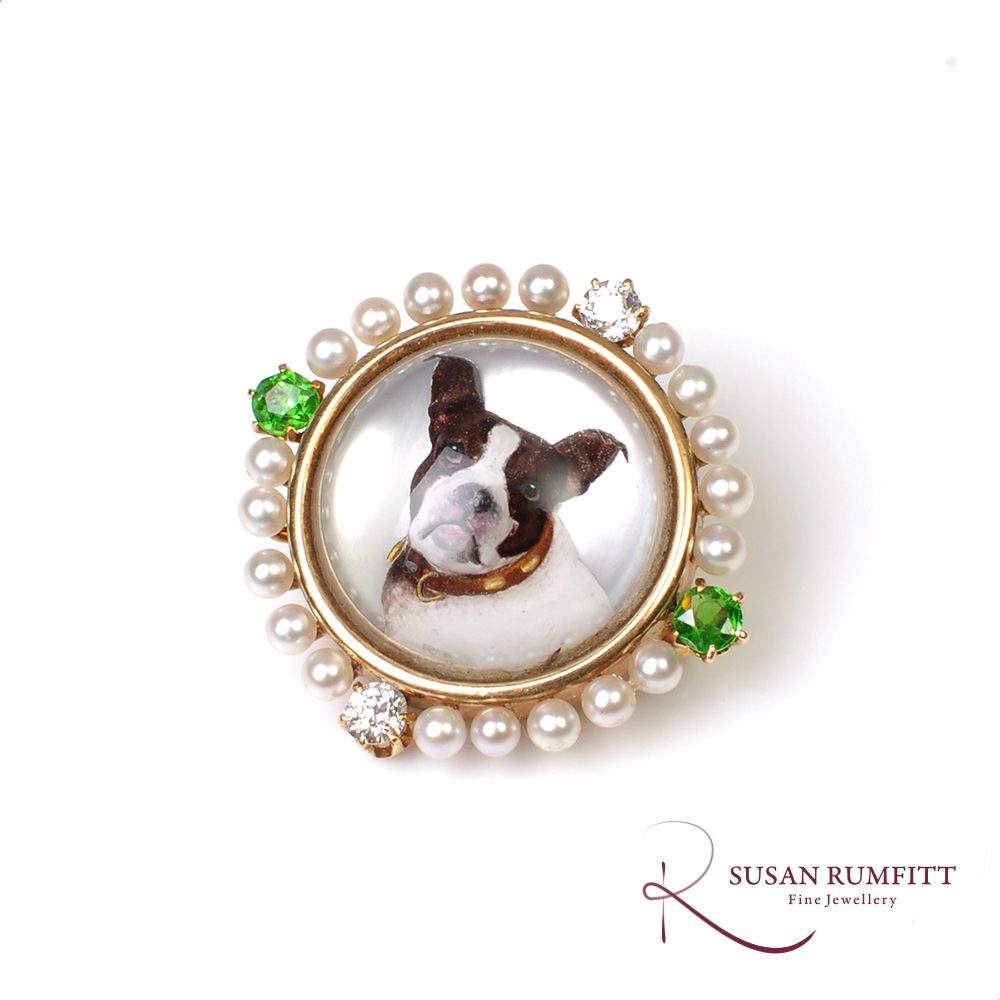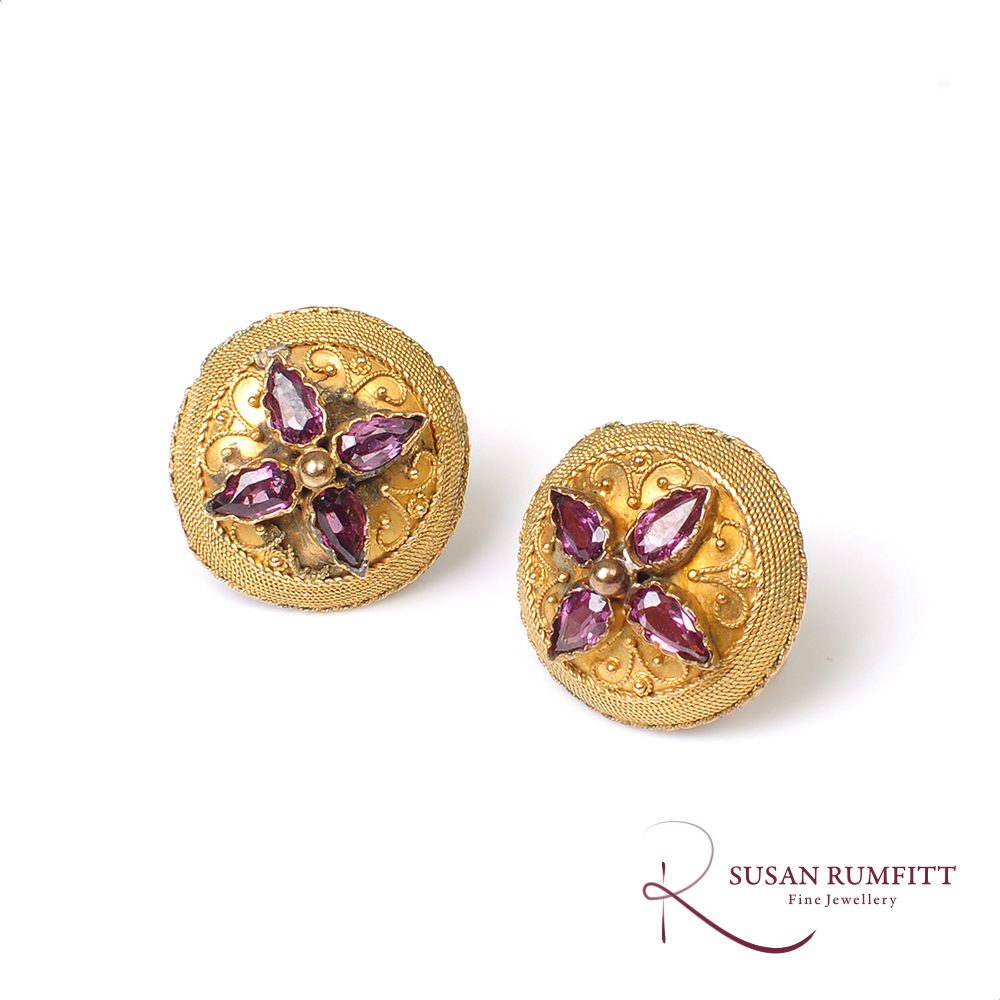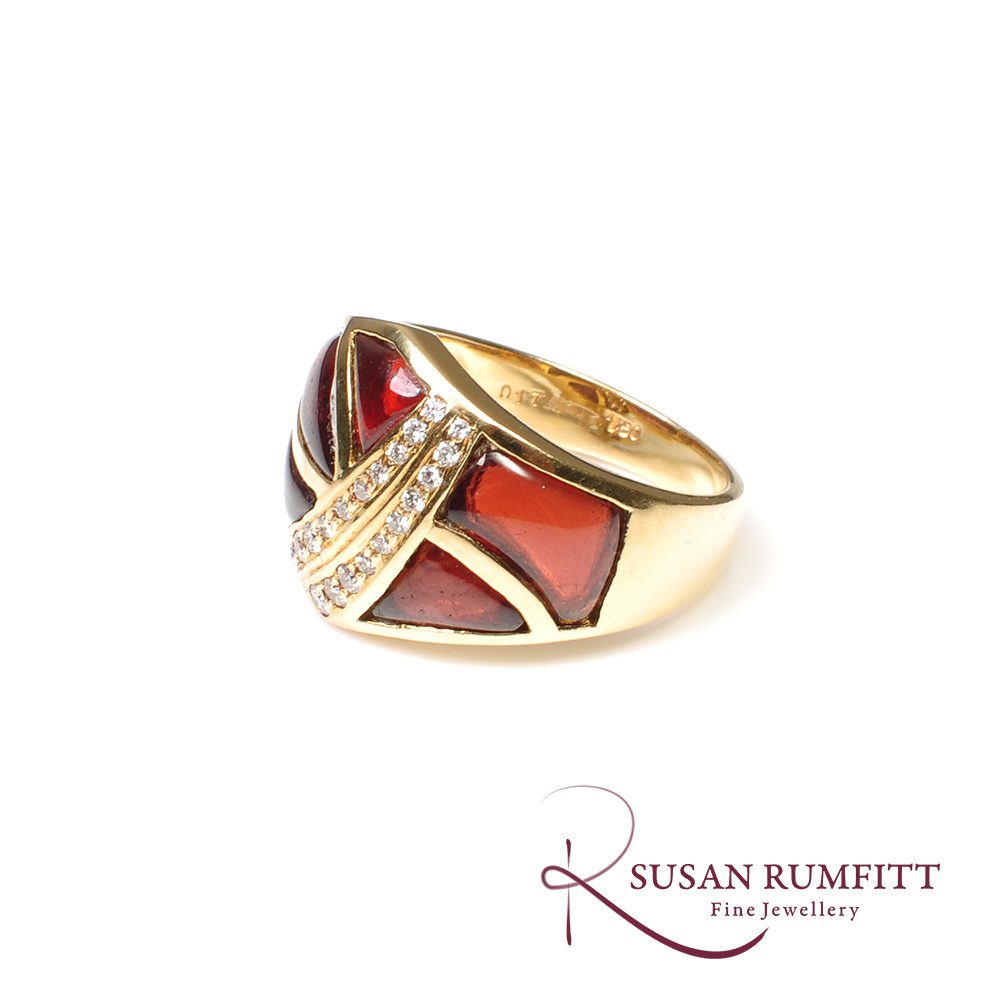As January’s birthstone, garnet provides a colourful start to the new year. Garnets are actually a large group of closely related minerals with interrelated chemical compositions leading to a large variety of colours. Indeed, it is often said you can have garnets in any colour except pure blue.
Garnets are said to bring love, luck, loyalty, friendship and health. The Romans believed garnets sparkled when alerting travellers to danger, while the ancient Chinese believed they contained the souls of tigers. The Navajo tribe in the USA thought garnets brought luck and protection.
The brown-red through red to purple colour range that has been most recognised through history is the pyrope-almandine series of garnets. Most people are familiar with red garnet; their colour, high lustre, and ready availability have allowed it to be appreciated as a beautiful and precious gem for time immemorial. The stone’s name is derived from the Latin word granatus, which means ‘seeds’ and is thought to refer to the resemblance of red garnet crystals to pomegranate seeds. Ancient Egyptian tombs more than 5,000 years old have been found to contain garnet bead necklaces to usher the dead into the next world, the Romans used garnets extensively for intaglios and signet rings, and the Anglo-Saxons produced stunning pieces intricately inlaid with garnets as evidenced by the Staffordshire Hoard.
Another variety used since Roman times is hessonite, also know as ‘cinnamon stone’ for the yellowish-orange to reddish-orange colour. Hessonite enjoyed popularity during the 16th to 18th centuries under the names ‘jacinth’ or ‘hyacinth’, and a revival in the 60s and 70s when it was admired for its fashionable colour.
Garnets perhaps reached the peak of their desirability during the 18th and early 19th centuries when the Georgian elite would use flat cut red garnets in closed foil backed settings to create whole parures of exquisite jewellery. Often of floral design with articulated drops, they were intended to glitter and glimmer deep red in candle light to enchanting effect, and are understandably still very sought after today.
The Victorians also loved garnets. Big, juicy garnet cabochons were set in a variety of styles from enamelled renaissance revival jewels to pieces with delicate foliate mounts studded with rose cut diamonds. Unattractively called ‘carbuncles’ they were set in impressive gold mounts, often with a diamond or pearl embedded in a central carved star, or rose cut Bohemian garnets were set throughout an entire piece, frequently on a gilt backing for a less affluent market.
In the mid-19th century demantoid garnets were found in Russia and quickly became the most expensive garnet variety. These green garnets were popularised by Faberge in his work for the Tzars and soon taken up in Europe where they were particularly well suited to the hugely popular novelty lizard brooches.
Tsavorite is another green garnet, usually a lighter, brighter green than demantoid, often described as ‘leek green’. Although discovered in Tanzania in 1967 by Campbell Bridges it was not until the 1970s, when Harry Platt of Tiffany and Co joined Bridges and a larger deposit was found in Kenya, that it was commercially marketed under the name tsavorite.
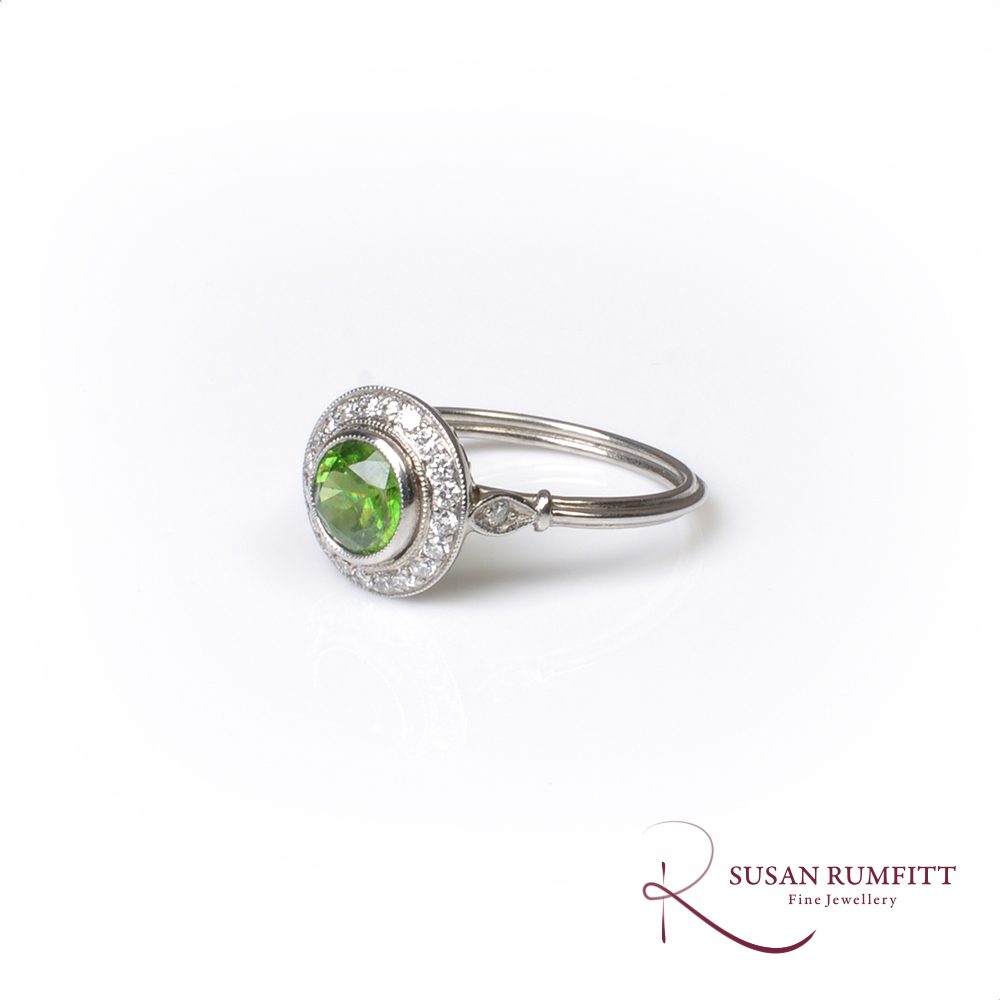
An Edwardian Style Demantoid Garnet and Diamond Target Ring
Today all of the many forms of garnet can be found in modern jewellery from designers who love the variety of colours they provide, to inexpensive beads and connoisseurs seeking the rarest and most expensive colour change garnets.
Garnets at Susan Rumfitt Fine Jewellery
At our gallery in Harrogate we offer a range of lovely pieces featuring January’s birthstone garnet, including:
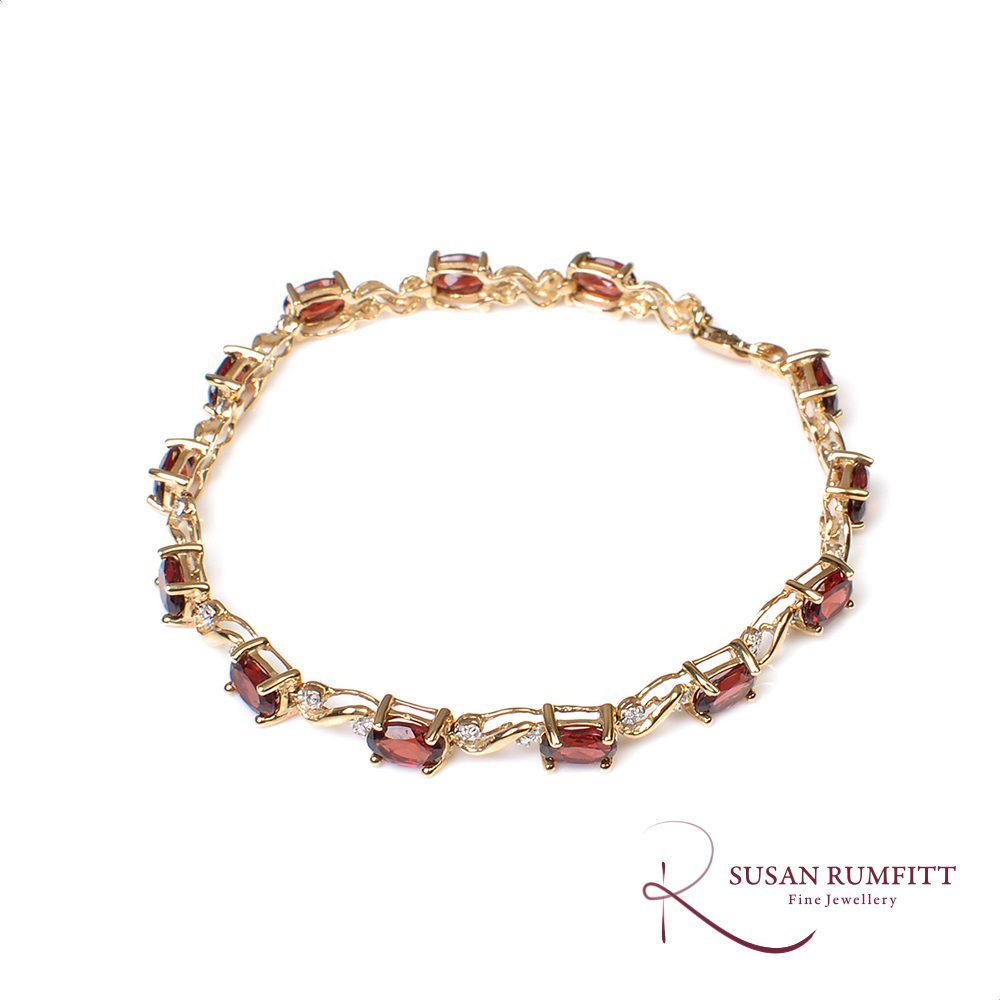
A Garnet and Diamond Gold Line Bracelet
For more information on the lovely pieces featured in this article, click on the links below:
An Early Victorian Garnet Garland Fringe Necklace
A Pair of Georgian Almandine Garnet Pendant Earrings
A Victorian Etruscan Revival Garnet Bangle Circa 1880
An Edwardian Style Demantoid Garnet and Diamond Target Ring
A Garnet and Diamond Gold Line Bracelet
A Garnet, Heliodor, and Diamond Cocktail Ring
A Victorian Essex Crystal Boston Terrier Dog Brooch
A Pair of Victorian Garnet and Gold Earrings
An Antique Opal, Diamond, and Demantoid Garnet Silver on Gold Pendant
Stylish Contemporary Garnet & Diamond Ring – 18 Carat Gold
Click here to browse our selection of garnet jewellery or book an appointment for a private viewing of our Gallery Collection.
